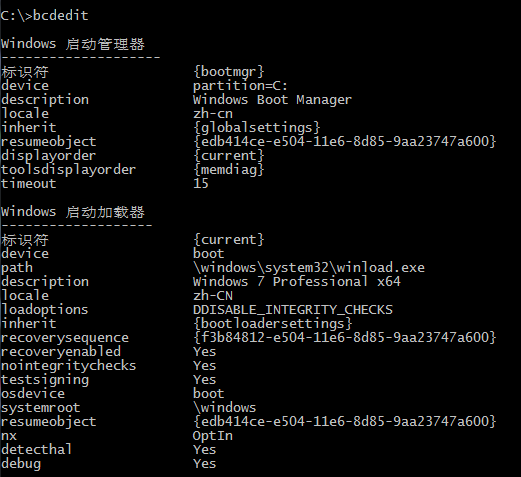
- #Easybcd vs bcdedit how to
- #Easybcd vs bcdedit install
- #Easybcd vs bcdedit software
- #Easybcd vs bcdedit windows 7
But in this case EasyBCD does not do the job. I have done this successfully on other computers using EasyBCD, so I understand about partitioning and about putting the Grub on to the Linux Mint’s root (/) partition.
#Easybcd vs bcdedit install
I want to install Linux Mint 17.x or 18.x (which use Grub2) in dual boot, without overwriting the Win7 bootloader. I have browsed this helpful article and comments in my search for a solution to my dual-boot problem. When complete, exit out of the Disk Management tool and reboot the system.
#Easybcd vs bcdedit windows 7
Right-click on the Windows 7 volume (C:) and selected “Shrink Volume.” Then enter the amount of space (in Megabytes) that the partition should shrink (which in turn becomes the amount of space available to install our Linux distribution), which in our example is 48000 Megabytes (48 Gigabytes), then select “Shrink” (See Figure 1). Windows 7: ~100MB (Windows 7 boot loader) For our 320 GB disk example, we’ll use the following partition layout: You’ll need to determine how much space you want to allocate to each of these additional partitions based on your requirements and disk size. We’ll also create a small FAT32 partition for sharing data between Windows 7 and Ubuntu. When finished, we’ll have five partitions in total: the two Windows 7-related partitions just mentioned, and ones for the Ubuntu operating system and Linux swap. You’ll notice that Windows 7 currently occupies all of the existing disk space using two primary partitions: one small boot partition the other for the operating system. The Disk Management tool can be accessed by using Win+r and entering the command diskmgmt.msc. While you can use third-party applications like GParted, I found Windows 7’s own Disk Management tool to be the most efficient method for accomplishing this task. The first thing that we need to do is reduce the size of the existing Windows 7 partition. Oh…, and while I’ve never encountered a situation where the Windows 7 Disk Management tool destroyed existing disk data, make sure you backup any critical files before you proceed.
#Easybcd vs bcdedit software
The software versions used in this post were as follows: All steps involved assume you have a functioning CD drive (or USB drive if you’d prefer) that the system can boot from. We’ll then use BCDedit to add a Windows boot menu option for Ubuntu. We’ll reduce the size of the partition containing the Windows 7 operating system and re-partition the remaining unallocated disk space in order to install the Linux distribution Ubuntu. To help explain the steps involved, we’ll use an 320 GB SATA hard drive with Windows 7 already installed.

Configuring BCDEdit to recognize and boot a Linux distribution located on a second physical hard drive is beyond the scope of this post. The steps described in this post assume that Windows 7 and the Linux distribution will occupy the same physical hard drive.
#Easybcd vs bcdedit how to
This post will describe how to use the Window 7 boot configuration data editor (BCDEdit) to configure a Windows 7 system that can boot to Windows 7 or a Linux distribution. (20141224 – This post has been amended to address changes in recent versions of Ubuntu, and to remove outdated instructions - iceflatline)


 0 kommentar(er)
0 kommentar(er)
